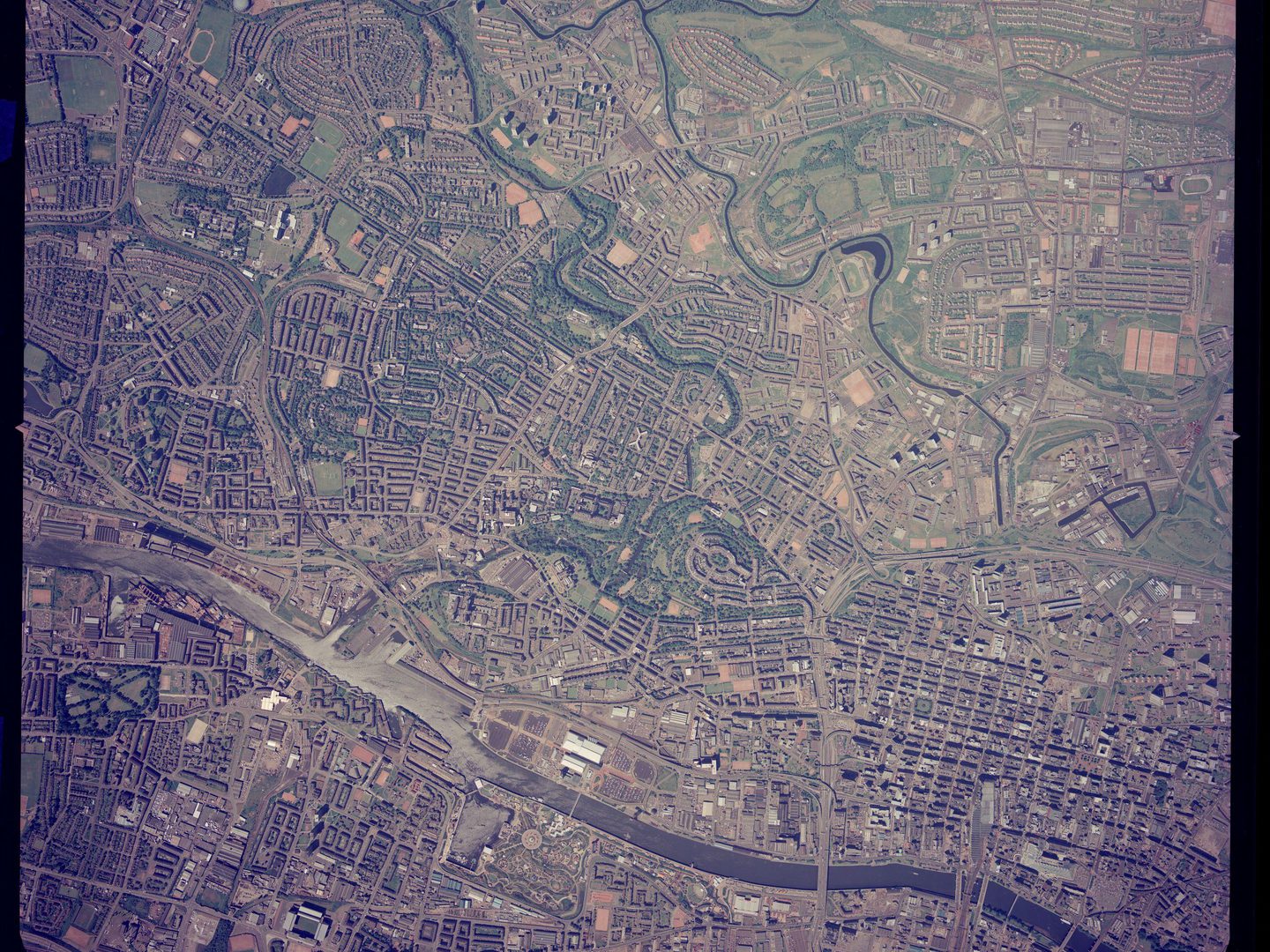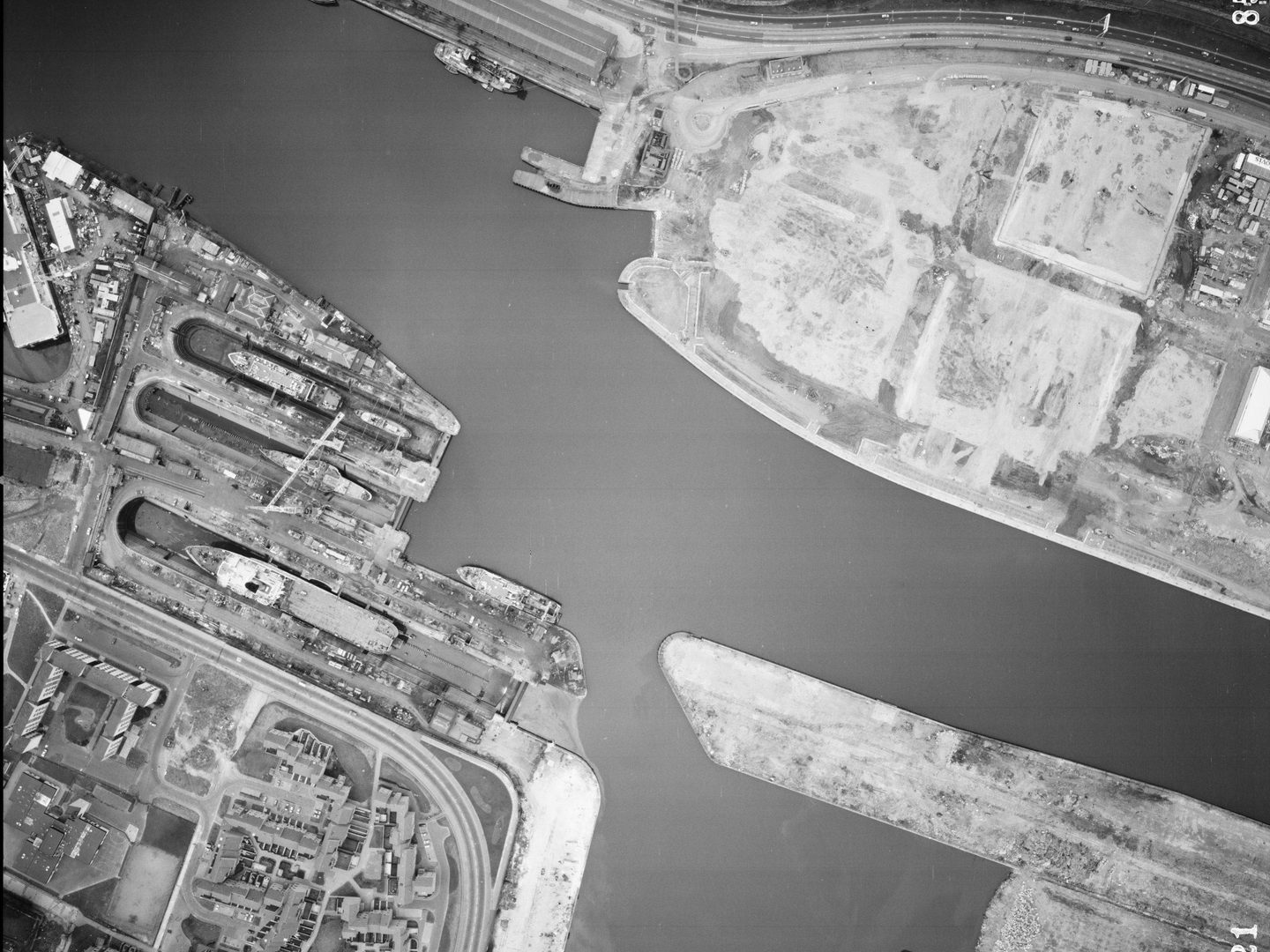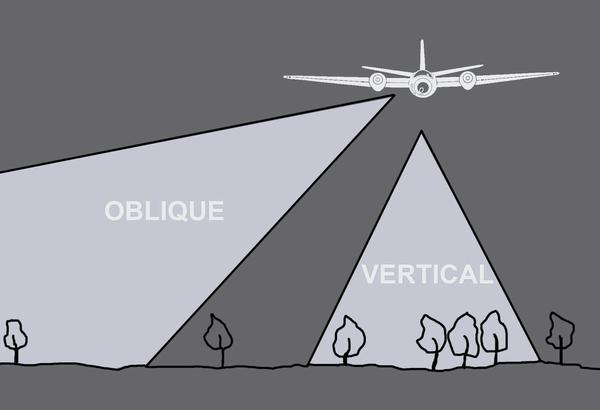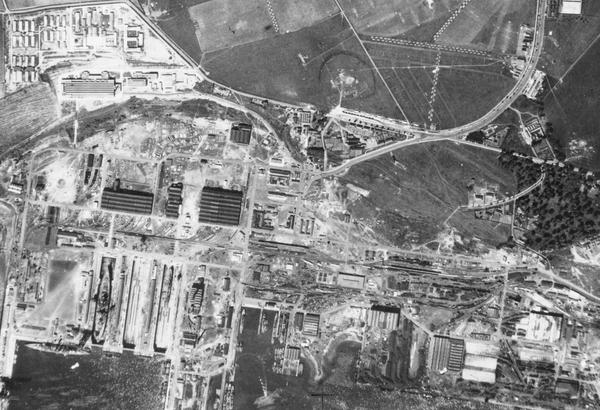Scale in Aerial Images
Scale is the ratio of the distance between two points on an image to the actual distance between the same two points on the ground. It is an important factor when describing and understanding vertical aerial photography. Knowing the scale of the photo under examination, can affect how you perceive or interpret what appears in the image. Scale also allows features in the image to be measured.

Small-scale and large-scale aerial images
Scale in aerial photography is presented as a ratio, like 1:24000 or 1:50000, in the same way that it appears on maps. If an image like the one above has a scale of 1:24000, this means that 1 centimetre in the image represents 24,000 centimetres (or 240 metres) on the ground. This is a small-scale photo showing central and west Glasgow, and beyond - it covers a large area of ground but doesn't show a lot of detail.

This image shows a portion of the same area as the first photo, roughly equal to the lower left quarter. Now all that is visible is the University of Glasgow at the top right, across the docks to Ibrox Stadium at the bottom left. That is because it is a larger-scale image at a ratio of 1:10000. Although the area covered is smaller, the amount of detail that is visible is greater.

This final image is at an even bigger scale of 1:3000. While 1 centimetre was the equivalent of 240 metres on the ground in the first image, here 1 centimetre represents just 30 metres on the ground. It only covers a small area of the docks visible in the previous two images, but in great detail. At this scale, cars and even people are clearly visible.
Focal Length
The focal length is the distance between the camera lens and the film. The focal length of the lens affects the scale of the image captured. A camera with a long focal length lens will produce images which look as if they have been taken close to the ground. Conversely a short focal length lens will produce smaller scale photographs which can look as if they have been taken at altitude.
More Guides

Types of Aerial Images
The capture of aerial photography has most often been been a systematic process. Learn to identify each type and see how they differ.

Scale in Aerial Images
Aerial photographs come in a range of different scales. Learn what impact different scales have on understanding aerial photographs.

Interpreting Aerial Images
Learn more about how to analyse and understand aerial imagery to make the best use of it for your research needs.